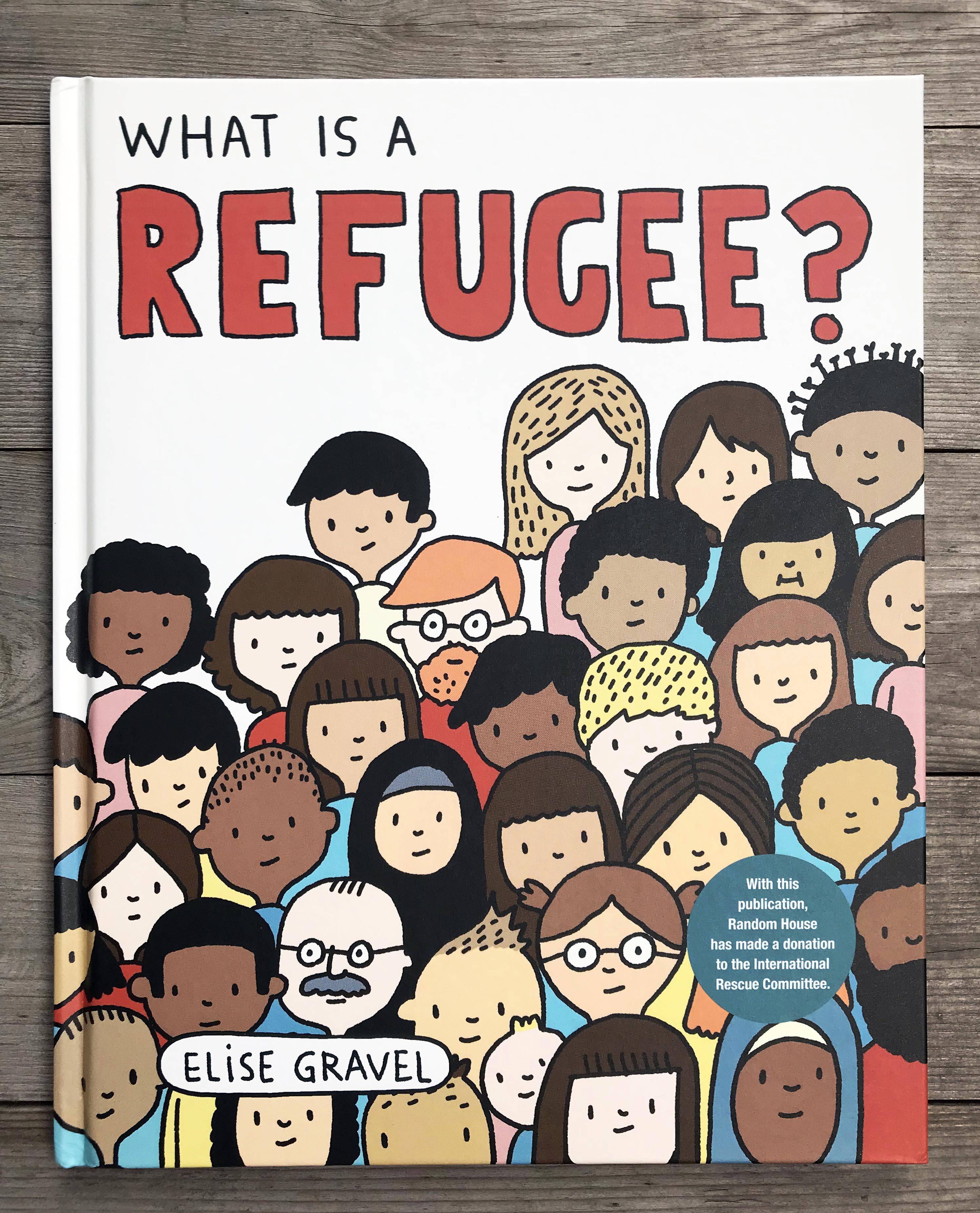This book is in stores today! An accessible picture book that simply and graphically introduces the term “refugee” to young children to help them better understand the world in which they live. Buy it here.

Review from The Bulletin:
Gravel begins her introduction to the refugee experience with a simple premise: “A refugee is a person, just like you and me.” From there, she walks readers through the various reasons people are forced to leave their homes, the dangers of their journeys, and the trials of asylum, and then returns to the fact that refugees are looking for belonging and safety—“just like you and me.” Gravel avoids preachiness and manages a rather titanic feat of humanizing an overwhelming humanitarian crisis for young audiences with a direct, no-frills text that avoids euphemisms but maintains accessibility. The illustrations are similarly kid appropriate, with naïve renderings of dot-eyed figures (with a variety of skin tones and hair color, nodding to the global nature of forced exodus) running from ruined cities in shock, navigating rough waters with grim determination, and approaching their new circumstances with hesitant hope. End matter includes “Refugee Kids Speak” featuring quotes from children Gravel interviewed, along with short biographies of famous refugees. KQG
From Booklist:
Using simple, direct text, Gravel explains what a refugee is, the reasons these individuals leave their countries of origin, and the steps they must follow in order to find safety and regain a normal life. Throughout, she emphasizes that refugees are people “just like you and me.” War, political instability, and prejudices can disrupt lives, forcing people to flee to refugee camps, where they must wait until a new country will accept them. Gravel’s cartoon-style art is used to great effect here. Bold lines, saturated colors, and expressive faces serve to emphasize the human cost of displacement. Gravel’s strength is her ability to humanize this topic without resorting to sensationalism. Both art and text avoid specific details about individual lives before or in the camps, but scenes of burning buildings, barbed wire, and tent cities make clear that the life of a refugee is difficult. Appended interviews with displaced children and minibiographies of famous refugees add to the appeal of this essential title for promoting understanding of the refugee perspective.
